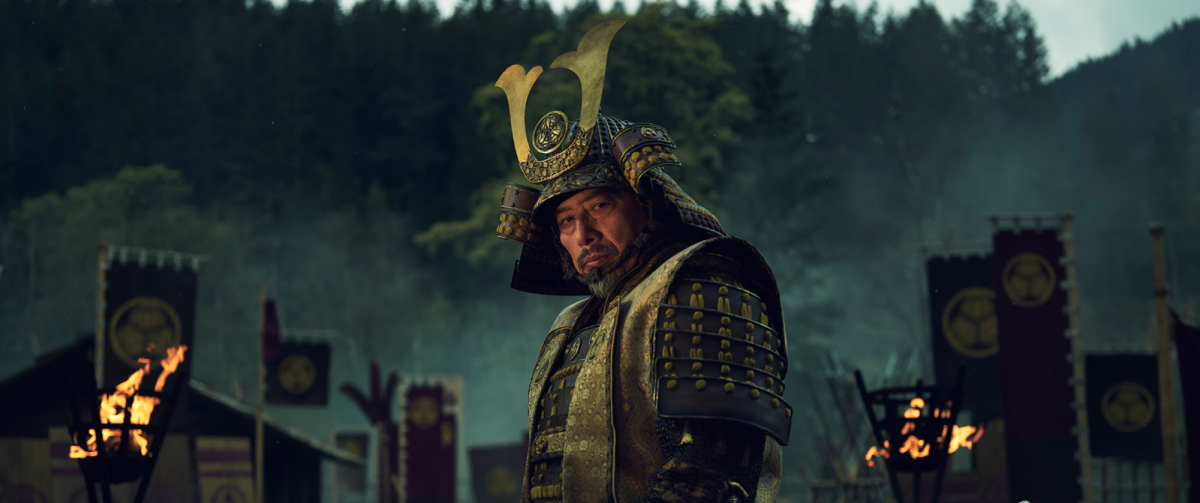The FX hit historical drama “Shogun” recently reached its season finale and is a sight to behold from both a production and story-telling standpoint, on Tuesday, April 23.
“Shogun” is based on James Clavell’s best-selling novel that is set at the end of Japan’s Sengoku Period, in the year 1600. In Japanese, Sengoku means the warring states, which is used to define this period of incessant warfare when ideals like revenge, honor and ambition reigned supreme.
The premise of FX’s new adaptation starts with the passing of Japan’s ruler the Taiko, whose only heir is underage. Thus leaving the path to Japan’s throne of shogun wide open. Before his demise, the Taiko established a Council of Regents to keep peace between Japan’s different domains and leaders.
More specifically, the story follows Lord Yoshii Toranaga played by Hiroyuki Sanada, as he faces impeachment and death by the Council of Regents, when a mysterious European ship is found washed ashore in a nearby fishing village.
From this point on the story introduces the protagonist John Blackthorne, played by Cosmo Jarvis, as he navigates this new foreign land along with its culture, traditions and harsh political landscape.
The show beautifully highlights much of what makes traditional Japan so awe-inspiring, which includes the eye-catching attire, gestures, and stunning scenery.
The costumes in the show were especially impressive, as each one was handmade deliberately for each character and the situations they were in. This included attire like ceremonial dresses, samurai armor and courtesan dresses.
The peasants’ indigo color palette that was used is distinguished from the upper class in Osaka city, who flaunted their wealth with bolder designs and colors. These minor details make all the difference in a world, where customs and attire were what primarily determined your identity and your purpose in society.
A facet that had truly mesmerizing appeal was the show’s realistic cinematography. The use of natural light sources with minimal enhancements of lighting and effects is what brought feudal Japan to life. This simple approach to the visuals was crucial because there was no electricity in this era and people relied on natural light.
Perhaps the most underrated element of the show is how each actor portrays traditional gestures and movements, including how they sit and walk. Every member of the cast ranging from the villagers, to courtesans all adapt the customs authentically.
By practicing these traditional customs, the audience is able to immerse even further into the Sengoku Period. Without details like this, the story as a whole would have looked inaccurate.
In fact, what makes the show even better is how the show displays Japanese history with a largely Japanese cast. Another key element that adds onto the story’s authenticity is how a majority of the dialogue is spoken in Japanese.
In most American-made shows and movies there seems to always be a divide between what’s true and what is made up with American influences. However, FX’s new adaptation of this story not only stays true to the source material, but even adheres to the same cultural practices of this time period in Japan.
RELATED: Dua Lipa shares radical spin on Britpop genre with ‘Radical Optimism’
A huge part of this was the involvement of Hiroyuki Sanada, who also plays the cunning warlord Lord Yoshii Toranaga. For the first time in his career, Sanada played the role of a producer, which allowed him to ensure the show stayed true to its Japanese roots.
Another aspect of the show that stands apart from other depictions of Japanese culture was how it abandons the stereotypical white savior trope that many American-made shows and films take on.
Blackthorne instead of being a savior tries to enforce his own individuality upon Japanese society, but comes to the realization that he is only a pawn, in the larger scheme of things.
In contrast to Blackthorne Mariko-sama, played by Anna Sawai, performs the role of the translator for Blackthorne and Lord Yoshii Toranaga. Mariko is also the main love interest to Blackthorne, but instead of merely playing into the typical love interest trope, she completely parallels Blackthorne and his character.
Mariko is arguably the true star of the show as she invokes Japanese ideals like honor, duty and tradition upon Blackthorne and other men in the show. Throughout the series, Mariko transitions from a depressed wife into a dedicated servant of Lord Toranaga and eventually shapes the trajectory of Japan’s patriarchal society.
In a traditionalist world where men wage wars, Mariko’s character shines bright as she represents not only Japanese culture, but the strength of women in general.
All in all “Shogun” successfully brings Clavell’s story to life as the crew of the show leaves almost no stone unturned. Everything about this adaptation is remarkable, like the cinematography, action, stage designs and costumes,
While the show completely adapted the book within a 10 episode season, there is definitely room to continue the story further. Yet the ending left some things to be addressed.
For example, the story could still cover the pivotal battle scene between Toranaga and the Council of Regents, which fans would be eager to see in season two.
Overall, “Shogun” is a piece of Japanese historical fiction unlike any other. The crew behind this accomplished far beyond what anybody had expected of them, and provided viewers with a glimpse of what traditional Japanese culture is.
If you’re a fan of Japanese culture, media or good storytelling in general then this show will have you locked into your couch like the seatbelts on a rollercoaster. Except the catch is, you won’t want it to ever end.


































































































































